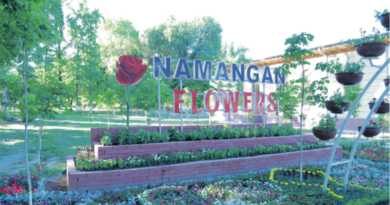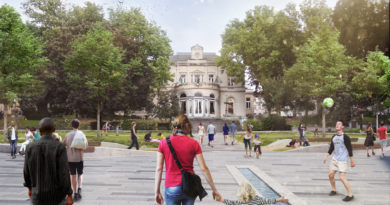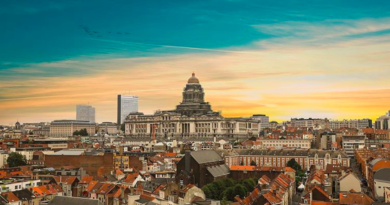Where I Find Myself: Joel Meyerowitz at Botanique
Two days before I visited the Joel Meyerowitz’s photo exhibition at Botanique, I went for a morning run, my gloves and earphones on. In Brussels I like to go jogging around the Cinquantenaire park, two, sometimes three times a week, it clears my mind. In winter the grass is covered with ice, a white layer of crystals, they glint in the early hours of daylight. Arrayed in long lines the old ash trees stand naked, some of them marked to be felled, and all of this I notice as I approach the Great Mosque of Brussels, the cold air in my face, almost cutting my skin, and I hear laughter, groans and gasps, then the young men appear, muscular silhouettes dashing left and right, dribbling and hitting the football in the courts. They are here in any weather.
I listen to audiobooks while I run, and several days before that morning, I had started a book called: Mindfulness, by Harvard psychologist Ellen Langer. Some people might believe in serendipity, others will shun it, but that morning, in the chapter I happened to be listening to, Joel Meyerowitz was mentioned. Langer recounts a lecture she attended where Meyerowitz talked about staying open to experience. “During the lecture, Meyerowitz described the amateur photographers who flock to Grand Canyon,” Langer wrote. “They shuffle about searching for a sign that says, ‘Shoot here.’ They search for the one and only right spot to stand. He advised the audience that there is no such spot, and that they could search instead for whatever was meaningful to them.”
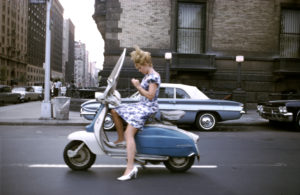
In Where I Find Myself, the exhibition that was shown at Botanique from 14th of December until January 18th, the universe of Meyerowitz was displayed in black and white prints from the 60’s, his first years in photography and advertising, then came the 70’s, the period when he began to explore colour. “I became curious,” Meyerowitz said in an interview. “Why do people choose to wear such and such colour? It’s a decision, a daily decision, that reveals so much about ourselves.”
After 9/11, Meyerowitz decided it was crucial to photograph Ground Zero in order to create an archive for the Museum of the City of New York. “That morning I was in Cape Cod. I woke up early to take some shots and everything was so quiet. An extreme peacefulness, so different from what was going on in New York.” Mayor Giuliani had forbidden access to any photographers and so Meyerowitz found himself being kicked out of the site by the police, over and over again. “I thought capturing everything in pictures was indispensable, a historical moment that had to be kept for posterity. And so I returned, day after day, until a group of policemen realized what I was doing was relevant. ‘Our children need to see this,’ they said, and allowed me to do what I had to do.” Meyerowitz stayed on the site for nine months.
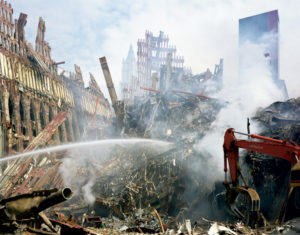
Although he’s taken pictures of still lives and portraits, the life and movement of the city has always intrigued him. “For me the city is a text, an invisible text that you can read if you pay close attention to it.”
In later years, one of his interests has become the way in which humans perceive the world around them, the interactions with each other, and how these interactions have changed over the years. This can be seen in his photographs, which have become wider shots, devoid of central activity. “I see people becoming more and more self-involved, busy with their cellphones. They don’t experience the world the way we used to in the past. My advice to photographers is, Go out into the world and observe. Be curious of what’s around you. That’s the key to find meaning.”

